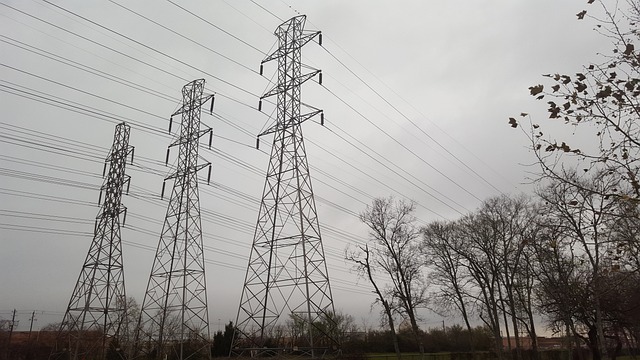Photograph by Laurseum
In “Blackout Warfare: Attacking The U.S. Electric Power Grid – A Revolution In Military Affairs,” by Dr. Peter Vincent Pry delves into the alarming vulnerability of the United States’ electric power grid and explores the potential implications of an attack on this critical infrastructure. Pry’s expertise in electromagnetic pulse (EMP) technology and his background in national security make him a compelling authority on the subject matter, and this book serves as a wake-up call to both policymakers and the general public.
The book provides a comprehensive overview of the U.S. electric power grid, explaining its significance and the fundamental role it plays in powering the nation’s infrastructure and economy. Pry takes readers through the different components of the grid, including generation, transmission, and distribution, and highlights the interdependencies that exist within this complex system. This foundational knowledge is crucial for understanding the potential consequences of an attack on the grid.
One of the main arguments put forth by Pry is the threat of electromagnetic pulse attacks, which have the potential to cause catastrophic damage to the electric power grid. EMP attacks involve the detonation of a nuclear weapon at a high altitude, releasing a burst of electromagnetic energy that can disrupt or destroy electronic systems over a wide area. Pry effectively explains the science behind EMP attacks, providing historical context and emphasizing their devastating impact on the electric power infrastructure.
The author supports his claims with extensive research, citing numerous historical events and studies. He draws on real-world examples, such as the 2003 Northeast blackout, to illustrate the vulnerability of the grid and the potential for widespread chaos and societal collapse in the event of a prolonged power outage. Pry’s inclusion of technical details and scientific explanations can be dense at times, but it lends credibility to his arguments and ensures that the book appeals to both experts and lay readers.
Pry also delves into the implications of a cyberattack on the electric power grid, highlighting the growing sophistication of cyber warfare capabilities. He warns of the potential for hostile actors to exploit vulnerabilities in the grid’s computer systems, gaining control over critical infrastructure and causing widespread disruption. By examining previous cyberattacks on other countries’ power grids, he makes a compelling case for the urgent need to strengthen the cybersecurity defenses of the U.S. electric power infrastructure.
One of the strengths of “Blackout Warfare” is the balanced approach taken by Pry. While the book exposes the vulnerabilities and potential risks, the author also presents a range of potential solutions and policy recommendations. He emphasizes the importance of proactive measures such as hardening the grid, investing in resilient infrastructure, and enhancing cybersecurity capabilities. Pry’s expertise in policy analysis shines through as he discusses the challenges of implementing these solutions and navigating the bureaucratic landscape.
However, some readers may find the book’s tone overly alarmist, bordering on fearmongering. While the threats highlighted by Pry are undoubtedly significant, a more nuanced discussion of the likelihood and timing of such attacks would have provided a more balanced perspective. Additionally, the book could benefit from a deeper exploration of the international context and the role of diplomacy and deterrence in mitigating the risks posed by potential adversaries.
In conclusion, “Blackout Warfare: Attacking The U.S. Electric Power Grid – A Revolution In Military Affairs” by Dr. Peter Vincent Pry is a compelling and thought-provoking examination of the vulnerabilities of the U.S. electric power grid. Pry’s expertise in EMP technology and national security shines through, as he presents a well-researched and persuasive case for the urgent need to strengthen the resilience and security of this critical infrastructure. While some readers may find the book’s tone overly alarmist, its importance lies in its ability to spark informed discussions and drive policymakers to take action in safeguarding the electric power grid against potential attacks.
If you want to learn more about Dr. Peter Vincent Pry checkout two of his interviews at PBD Podcast episodes numbers #155 and #160
Knowledge Knows No Bounds: Join Our Cause, Donate to Our Blog Today!



